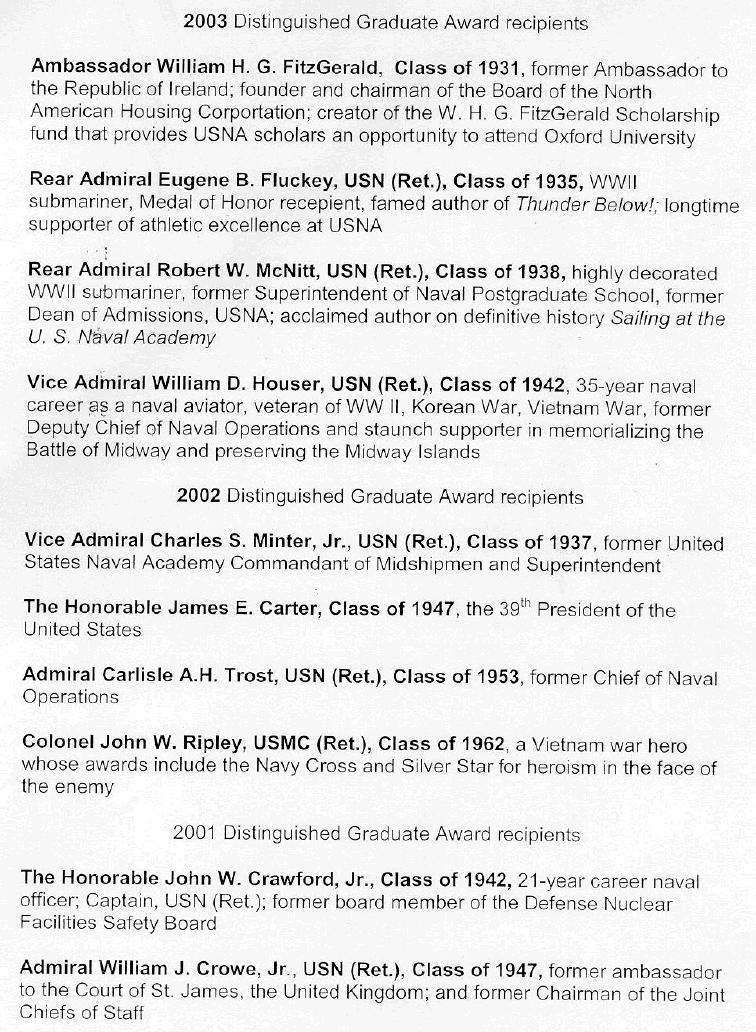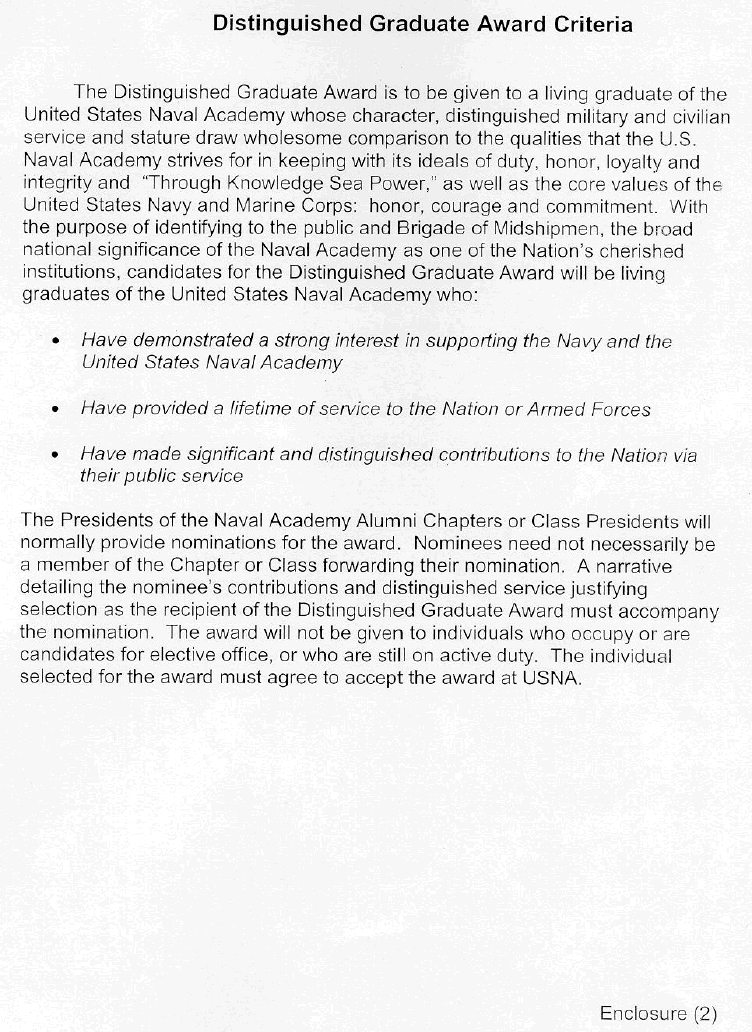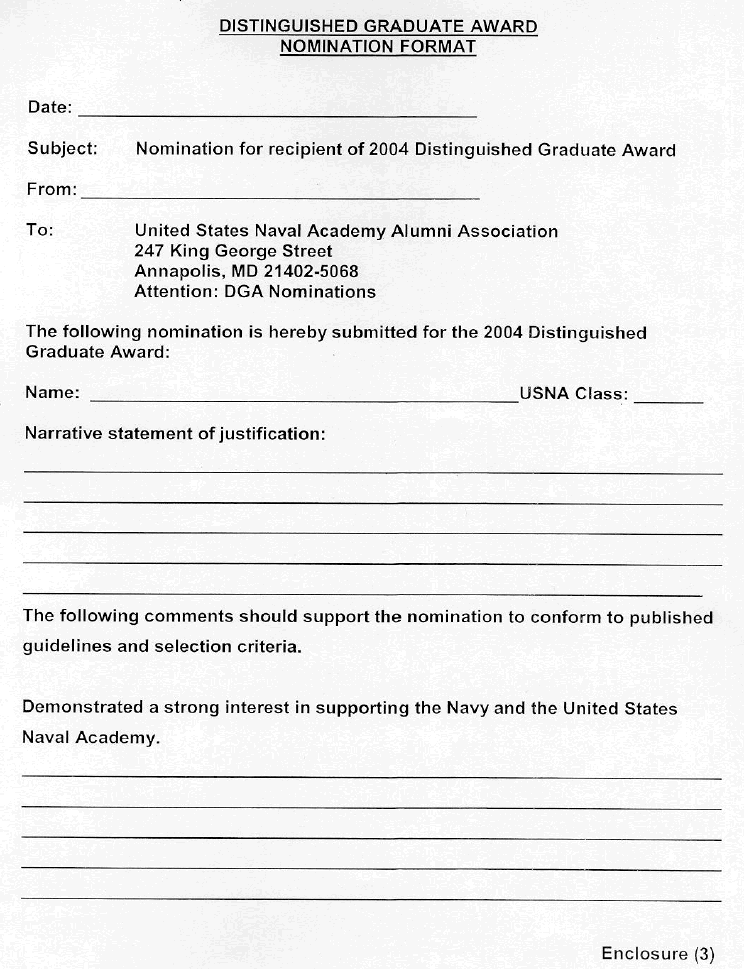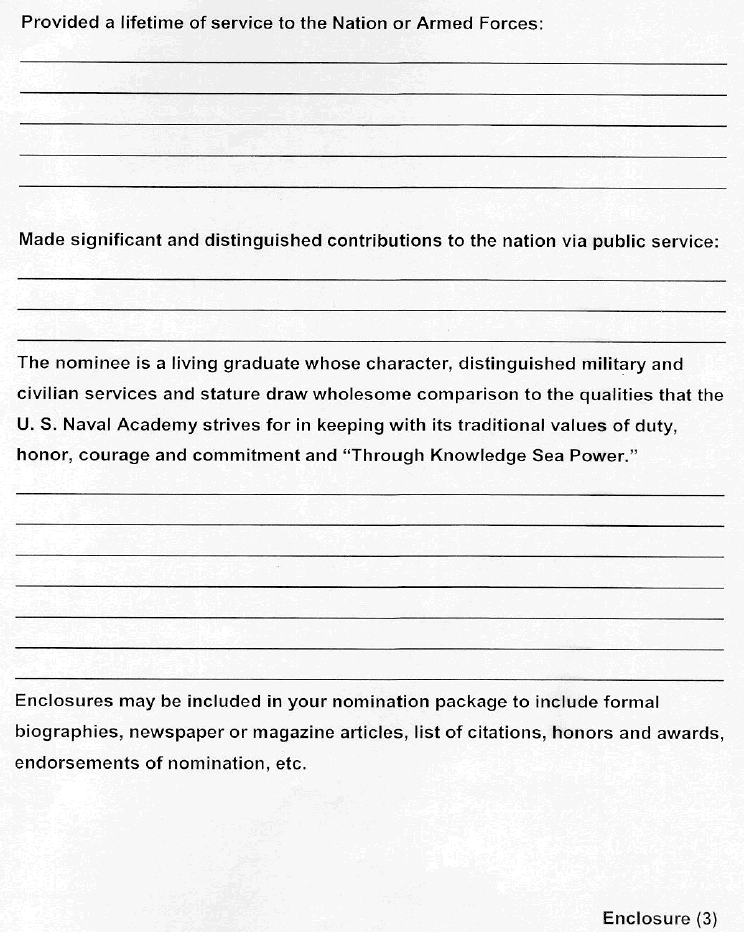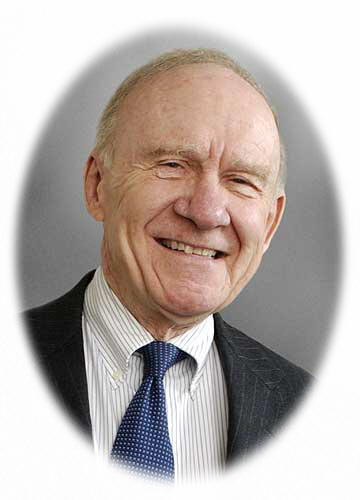

Narrative
John
Nolan was born and raised in Minnesota and graduated from the U.S. Naval Academy
with the Class of 1950 in early June of that year.
He was commissioned a 2d Lt. of Marines some three weeks before a North
Korean invading force crashed over the 38th parallel starting the
Korean War.
Nolan
was ordered to The Basic School (TBS) at Quantico, where the nine-month course
was accelerated to make graduates available earlier for “duty beyond the
seas,” as mimeographed orders for Korea read at that time.
And he was one of 50 out of a class of 365 assigned directly to the 1st
Marine Division in Korea. There, he
joined Baker Company, 1st Battalion, 1st Marines and soon
became the rifle platoon leader of Baker Company’s 1st platoon.
The Marines were then attacking to the North.
In a major turning point of the war, they had stopped the Chinese
counter-offensive cold in its tracks and were headed back to the 38th
parallel, and later that summer on to the Punch Bowl.
An engagement discussed by Nolan
in his book The Run-Up to the Punch Bowl,
A Memoir of the Korean War, 1951, is worth reviewing in order to gain a
perspective of his Korean tour. In
late September, 1951, Baker Company, including Nolan’s reinforced rifle
platoon of 103 Marines was holding the high ground on Hill 854 (854 meters)
about 25 miles north of the 38th parallel and ten miles inland from Korea’s
east coast.
On the evening of September 24, a
message from the Battalion to Baker Company directed one reinforced rifle
platoon to execute a combat patrol to hill 467 the following morning to gather
intelligence by getting prisoners
Hill 467 was an ugly twisting
ridge running directly across their front. It
was connected to Hill 802, a massive, natural stronghold further to the
northwest holding a large NK force. At
times the Marines could see the enemy swarming like ants on Hill 802 but they
did not know what was on Hill 467. That
evening Nolan thought about Hill 467.
“On the map it was about 1300 yards away.
More important was the topography. Between
us and 467, the mountain plunged into a deep ravine, more than a thousand feet
below us, with a stream coursing through it.
The route down was steep and rocky, and when we’d got across the stream
we’d be right on the approaches to 467. Just
going down there and then climbing back up 467 would be enough of a problem,.
But I wanted to see if we could do it with some kind of cover, out of
sight of the gooks on top who might just be waiting for a visit from us.”
The next morning at 0600 Nolan led
his platoon down the slope into the ravine. Going down the slope was slower than
expected. There was no trail, no
path, they took a lot of detours, sometimes dropping to all fours to work around
jagged rocks. By the time they
reached the stream at the bottom it had taken six hours.
The sun was high in the sky and everyone was sweating profusely. And they
still had a hard climb up the opposite ridge.
As they crossed the stream, staying low, leaning into the current, water
up to their chests, no talk, no noise but all he could think of was, “Have we
been seen? Are we being watched?”
Finally across the stream Nolan was able to look up at Hill 467 from
directly below. It looked different,
higher and more imposing. He
selected a route up a humped spur covered with trees and bordered on both sides
by shale slides. They moved up
slowly through the trees. There was
tension now and the fatigue slipped away. They
were no longer tired, moving slowly, peering intently to the front, trying to
see through the foliage.
Finally, they came through the
trees into daylight on the narrow crest of the ridgeline.
There was no trace of the enemy. Nolan felt something like relief and he
could see it in others. But that was
no time to feel like that. It was always dangerous to feel relieved, most
dangerous at a time like that.
They were near the middle of the
ridge. Nolan sent one squad to the
right where the ridge extended several hundred feet before dropping off sharply
into the valley below. Then he took
the second squad to the high knob on the left, the highest point on the ridge,
the point designated on maps as hill 467.
As they moved stealthy toward the
knob they discovered running along the ground in a slight depression –
communications wires! They cut them
and moved on. As the point fire team
was just coming up to the top of the knob, they heard the first sound.
It was the familiar burst of a North Korean burp gun.
A string of bullets snapped into the branches over their heads.
They were lucky. The NK
sentry had fired in haste, wildly and missed.
He could not have lived long enough to release the trigger as Nolan’s
BAR man gunned most of a full magazine into him and then swung his BAR to the
right and pumped the last burst into another NK a few yards away.
By this time they were so close that a third enemy just had time to throw
up his hands and be grabbed as a prisoner as they swept over him.
Just beyond the knob, a low saddle
extended for some fifty yards. Both
sides of the saddle were studded with enemy bunkers.
Racing out of them and, in some cases, diving back into them were more
NK’s than Nolan had ever seen that close before.
Nolan’s fire teams swung up along side as they started receiving fire.
As the first enemy rounds zinged past,
“two NK’s just in front swung their heavy Russian Maxim machine gun around
to face us. But they never got off the first round.
One had the top of his head blown away and the second was slammed
backward into a tree as a fusillade of BAR rounds converged on them.”
Another NK was cut down as he ran to a second machine gun.
Nolan called for the squad behind
to provide cover and they moved down into the nest of bunkers.
“This was really what the first
platoon did well, maybe as well as it could be done.
They’d had all the practice they needed and a lot of experience.
By staying low and working fast we could concentrate on the bunkers.
We were getting some fire from the far end of the saddle, toward Hill
802, but that was returned by the covering force and the machine gun back up on
the knob.”
“As
we approached the first bunker, one of the NK’s inside jumped up and out
through the entrance. It looked like
a jump shot as he released two potato masher grenades that he must have held to
the last second. They exploded
instantly. As I dived to the ground,
something -- I suppose a chunk of metal -- whanged past my head into the tree
next to me….Strangely enough through all the fire, smoke and exploding
grenades two other NK’s managed to come out of the same bunker with their
hands up. We grabbed them and
hustled them back to where our first prisoner was being held.
While this was going on, the fire team to my left had blown up two
bunkers and captured a fourth prisoner.”
So it
went. Moving, firing, grenading
until they had reached the last bunker. When
they reached the end of the ridge all firing died down, they scooped up enemy
papers and insignia from the bodies. Nolan realized it was time to get out.
Fortunately the few of his wounded could still walk and with the
prisoners in tow they hustled back to the knob.
Making sure all of his men were accounted for they headed back down the
hill. Half way down the NK mortars
started but before they could adjust, Nolan and his platoon were back down to
the stream. Heavy support from the
company covered them as they returned back up Hill 854 to safety.
The first platoon had done a magnificent job.
They had brought back eight prisoners, additional papers and maps from
the twenty or so enemy dead they had searched and had left many more dead back
in the bunkers. A good score!
Nolan
stayed with his platoon well beyond the allotted time for rotation out of a
rifle company. In some of the
hardest fighting of the Korean War, he was wounded and decorated (The Silver
Star, Bronze Star w/ Combat “V”, Purple Heart).
On New Year’s Day, 1952 after nine months in Korea, he rotated back to
the States.
His
next assignment was to Marine Barracks at the Navy Yard, Washington, D.C.
And while there he started law school at Georgetown, initially in what
were then called evening classes. After
the 1953 truce in Korea, in early 1954, he left active duty, retaining his
commission in the Marine Corps Reserve, and shifted to full-time day classes at
Georgetown, where he graduated at the top of his class in 1955.
He served as a law clerk to Justice Clark, Supreme Court of the United
States, for the 1955 Term, and then joined the distinguished law firm of Steptoe
& Johnson in Washington. He was
the 21st lawyer in a firm that now numbers some 475 lawyers in eight
offices in the United States and abroad. In
the 80’s, as Managing Partner he was Chair of the firm’s Executive
Committee, and he remains active in the firm today.
In
recent years, Nolan’s practice has included ADR (Alternative Dispute
Resolution), essentially resolving disputes by mediation or arbitration, rather
than litigation. As a mediator or
arbitrator, he has resolved major disputes in professional football,
communication satellites and the insurance industry as well as the Haft
family’s multiple lawsuits in the District of Columbia, Maryland and Delaware
over individual interests in corporations and shopping centers.
Further, Nolan has long served pro bono as a mediator for select
cases before the United States Court of Appeals for the District of Columbia
Circuit.
Law
Practice
As a
Washington lawyer over the past half-century, Nolan has had a storied career.
He has acted for individuals and corporations
in cases ranging from the trial courts to the Supreme Court of the
●
Representation of Alyeska, the consortium of major oil companies that
built, owns and still operates the Trans-Alaska Pipeline.
This was the first major case to be decided under the National
Environmental Policy Act. It
involved the White House, the Congress and all of the principal agencies of
government before it finally ended up in the Supreme Court.
●
Representation of Ford, Chrysler and the Motor Vehicle Manufacturers
Association in a series of cases involving new Federal laws regulating emissions
or fuel economy in the automobile industry.
●
Representation of the New York Stock Exchange in its long struggle with
banks over the development of automatic investment services.
●
In the Supreme Court of the United States, Nolan successfully argued the
appeals of Massachusetts Mutual and Jefferson Pilot (two appeals, three oral
arguments) where the Court agreed that the companies were not subject to
punitive damages under ERISA.
Government
and Public Service
In the
Presidential election of 1960, Nolan served as Advance Chair of the Kennedy
campaign. And in 1961 and 1962, he
worked outside of law practice on several Administration initiatives.
The last and most extensive of these came to be known as the Cuban
Prisoners Exchange. It was the
successful effort to free the surviving members of Brigade 2506, some 1,100
young Cubans who had enlisted as volunteers and landed at the Bay of Pigs.
A year and a half later, they were still held by Castro in prisons at
Castle Principe in Havana and on the Isle of Pines.
All of the Brigade were released on Christmas Eve 1962, in return for the
delivery of 20% of the medicines and baby foods provided for in an agreement
that
Almost
immediately after delivery of the last American prisoners, Nolan reported to the
Department of Justice where he was sworn in as The Administrative Assistant to
the Attorney General, then Robert Kennedy. This
was just in time to meet the incoming tide of civil rights crises in the South,
especially Alabama. Active
demonstrations in
Robert
Kennedy – as a member of the National Security Council and as JFK”s point
man in a host of international crises – was active on a number of
international security fronts. Nolan, because of his Naval Academy and Marine
Corps background, was drawn into those matters as well.
He was RFK’s representative on the Special Group CI
(Counterinsurgency), a high-level committee established at RFK’s initiative.
Nolan met with this committee weekly when he was in Washington, usually
as a stand-in for RFK. And as one of
a three-man review team, he traveled to countries the Committee was concerned
about in South America, Africa, and finally to the Far East. Later, after he was
back at the law firm, Nolan advanced RFK’s trip to Germany and Poland in 1964.
And when RFK was in the Senate, Nolan advanced his trip to Mexico, Peru,
Venezuela and Brazil in 1965, and Capetown, South Africa, for the famous Day of
Affirmation Address in 1966.
In late
1967, as Special Counsel to the Senate Judiciary Committee, Subcommittee on
Refugees, Nolan went to Vietnam as part of a three-man team to report on
civilian casualties and refugees. He
was there for four weeks, mostly in I Corps in the North where a number of his
classmates, typically Marine majors and lieutenant colonels, were helpful in
providing the information the Committee was seeking
In 1975, Nolan was one of the lead counsel to the group of young women
and Congressmen who were seeking the admission of women to all of the service
academies. The District Court ruled
against their application, but on appeal the Court of Appeals reversed and
remanded the case for reconsideration. The case stopped there.
It was mooted by the legislation enacted into law providing for admission
of women to all of the service academies.
Back in
the Supreme Court in 1981, Nolan, appearing pro bono for whistleblower A.
Ernest Fitzgerald, argued the cases of Nixon v. Fitzgerald and Harlow
and Butterfield v. Fitzgerald. The
Nixon case raised the crucial issue of absolute
Presidential immunity; Harlow and Butterfield presented the issue of derivative
Presidential immunity. The Court ruled in favor of Presidential immunity in the
first case, but remanded the second case to the District Court where it was
settled favorably to Fitzgerald.
Over
the years, Nolan has received a number of awards including most notably:
●
The “Servant of Justice Award” presented by The Legal Aid Society of
The District of Columbia, 2001.
●
The “Wiley A. Branton Award” presented by the Washington Lawyers’
Committee for Civil Rights and Urban Affairs, 1993.
●
The prestigious “Segal-Tweed
Founders Award” presented by The National Lawyers’ Committee for Civil
Rights Under Law, 2006.
●
For more than 25 years, Nolan has been selected in a peer-review survey
as one of the Best Lawyers in
For
some 20 years, Nolan was a Moderator of Aspen Institute Executive Seminars, in
Aspen, Colorado and Wye, Maryland, occasionally as many as three seminars in a
year, including a special All-CEO Seminar. For
two years, 1987 and 1992, Nolan was a Visiting Fellow at Cambridge University in
England, for one Term each year. Also
over the years, Nolan has served as a corporate director of two NYSE and one ASE
listed corporations:
Support of Navy and Naval Academy
As
Nolan’s responsibilities for corporate directorships and an active law
practice have lightened in recent years, he has had more time to devote to
●
He served as Chair of a three-man committee (with Admirals Minter and
Chadwick) to review leadership performance of the Naval Academy Alumni
Association. The committee’s
report resulted in significant personnel changes.
●
He served as a member of committees established to recommend leadership
for the Alumni Association and the Naval Academy Foundation and fundraising
consultants for the Foundation’s first fundraising campaign.
●
He was active in development of the Naval Academy Foundation as it exists
today, did much of the corporate legal work and served as lead counsel for the
amalgamation (merger) of the Foundation with the organization then called the
Naval Academy Endowment Trust.
●
After the Foundation and Alumni Association were suitably aligned and
staffed, Nolan served as General Counsel and a Director of the Foundation,
2000-2007, and as Board Counsel of the Alumni Association for roughly the same
period, 1998-2007.
●
He served as a member of the first DGA selection committee under Admiral
Trost in 1998 and for several years thereafter.
All
legal services provided to any Naval Academy affiliated organization in
connection with these activities were provided at no charge.
Further,
Nolan and his wife, Joan, have endowed in perpetuity the Nolan Scholarships.
These scholarships provide for two years of post-graduate study at
Cambridge University in England in the discipline of the scholar’s choice.
Scholars are selected by the same committee that selects Fitzgerald,
Pownall, and other Naval Academy funded scholarships and recommends scholars for
Rhodes, Gates, Marshall and similar outside scholarships.
Nolan has sat with the committee in recent years but does not vote.
For Nolan Scholarships, there is a preference for USNA graduates
commissioned in the Marine Corps, and the first two scholars selected are
Marines. The first was the Brigade
Commander in the Class of 2003. The
second, Class of 2005, was an Academic All-American and a four-year starter in
women’s soccer. The third, Class
of 2007, is a Navy Ensign. He, like
the second scholar, has elected to read Chinese Studies, Politics, History and
Economics at Cambridge. The first
scholar, now a Marine captain, has recently returned from el Anbar Province in
Iraq, where he commanded a light-armored recon unit.
The second just graduated from The Basic School at Quantico, and the
third is in Beijing as part of a nine-month in-country phase of the course.
Nolan
has also written a book about his service and that of a half dozen of his Basic
School classmates (three from USNA) as Marine rifle platoon leaders in the
Korean War. The book, The Run-Up
to the Punch Bowl, has been presented by the Naval Academy to all 215
graduates in the Class of 2007 Commissioned in the Marine Corps, and to all 225
Marines in the Class of 2008. For
this year’s Class, the presentation was in Smoke Hall where all the books were
signed by Nolan and by General Mike Hagee, immediate past Commandant of the
Marine Corps, and followed by a reception there.
The book is strongly recommended by Generals Hagee, Mattis and others as
essential reading for small unit infantry leaders.
It is a bestseller at the National Museum of the Marine Corps, Quantico,
and is sold in bookstores at the Academy and at military bases throughout the
country. Nolan lectured on the
Korean War at Camp Pendleton, and discussions are currently underway for the
book’s publication in Korean and other languages.
Also
over the years, Nolan has provided financial support to the Naval Academy
Foundation, the Class of 1950 program for renovation of the Naval Academy
Museum, The President’s Circle, and other Academy fundraising efforts.
John Nolan is a living graduate whose
character, distinguished military and civilian services and stature draw
wholesome comparison to the qualities that the U.S. Naval Academy strives for in
keeping with its tradition and values of duty, honor, courage and commitment and
“Through Knowledge Sea Power.”
Attachments:
- Letter
of Recommendation: George P. Watt,
Jr.,
-
Letter of Recommendation: Admiral
Leighton W. Smith Jr., USN (Ret.)
- Letter
of Recommendation: Colonel John W. Ripley, USMC (Ret.),
- Book Reviews:
The Run-Up to the Punch Bowl, a Memoir of the Korean War, 1951
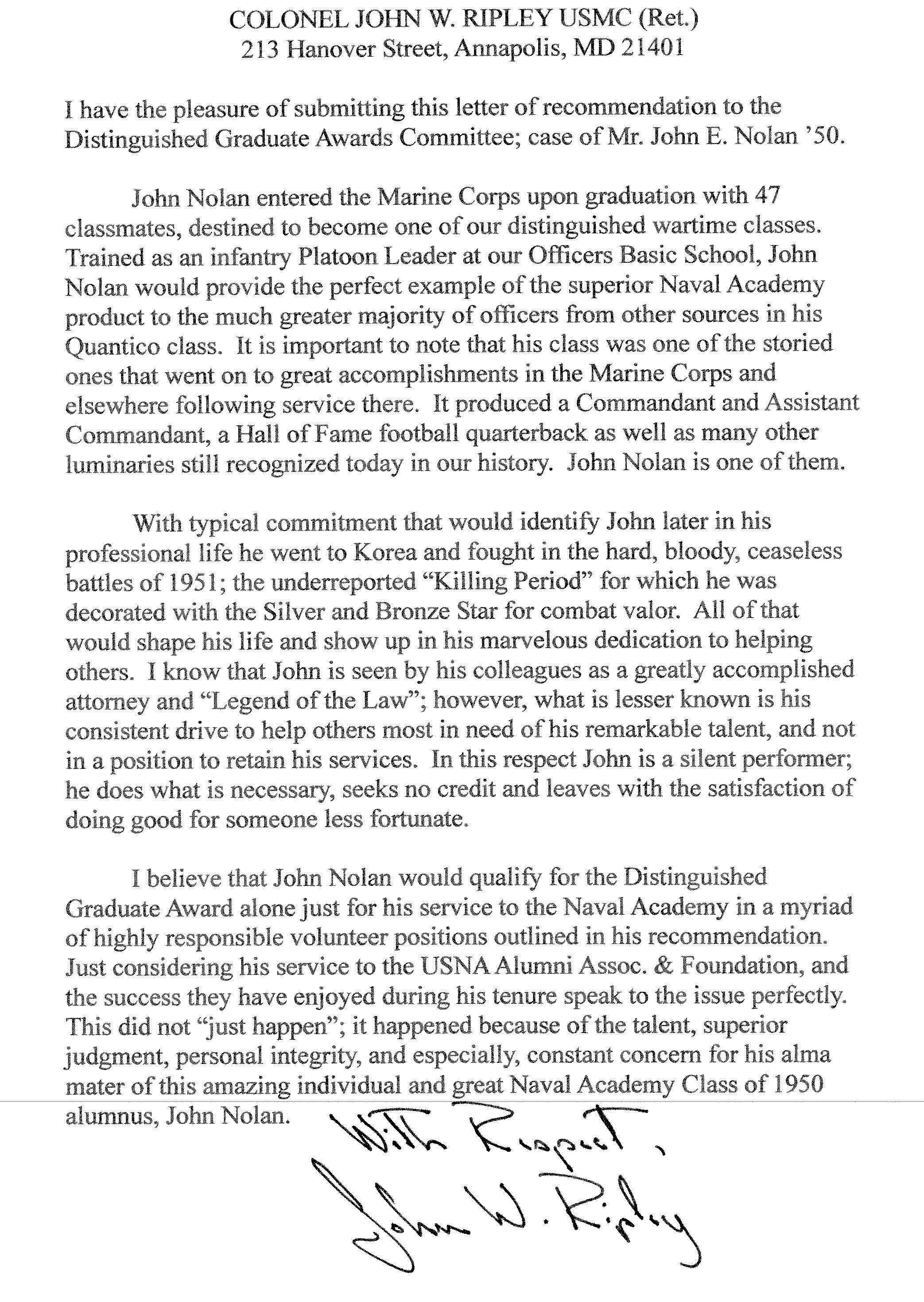
BOOK REVIEWS
The Run-Up to the Punch Bowl, A Memoir of the Korean War, 1951
By John Nolan,
published by Xlibris Corporation, 2006
“Great book!
John Nolan has written a magnificent account of the Marines in action
during the Korean War. It is a story
about the Marine spirit and ethos. Every
American should read this with pride in the Corp of Marines.”
General Anthony C.
Zinni, USMC (Ret.)
“It’s a wonderful
book. The writing is superb; it
flows, it’s moving, highly descriptive and strikes just the right tone neither
laconic nor emotional. Every Marine
should read it.”
Haynes Johnson,
Journalist, Author
“This is a book
about Marines, ordinary Americans who under unimaginable pressures do the
extraordinary day after day. You
will laugh. You will cry. And
after reading John Nolan’s memoir, you will have a far more profound
understanding of the barbarity of war.”
Mark Shields,
Columnist; Commentator, The NewsHour
“John Nolan’s
timeless story of men in battle during the heavy fighting in Korea, 1951, bears
all the marks of a classic – good men, hard men, decent men in brutal, near
constant combat. What they
accomplished in those battles would reflect later in their lives – those who
kept them – as many would become highly successful in the Marine Corps and in
other careers.”
Colonel John W.
Ripley, USMC (Ret.) (The Bridge at Dong
Ha)
“John Nolan learned
about leadership the hard way – leading a Marine rifle platoon in close combat
in Korea. He is modest, honest and
tough. And his memoir is a
compelling read.
Evan Thomas,
Newsweek
“If you don’t
know haw a few Marines prevented the Korean War from becoming the world’s most
dangerous war, then join Lt. John Nolan’s 1st Platoon, Baker Co.,
1stBn, 1st Marines, 1st MarDiv.
The Run-Up to the Punch Bowl is a clear-eyed, gritty, rich day-by-day
account of what makes Marines go up the hill.”
Roger Mudd, The
History Channel
“This excellent
book is a tough, realistic account of Marine ground combat.
And leadership principles involved are directly relevant today.”
Admiral Charles R.
Larson, USN (Ret.)
“There are few
things more dangerous—or rewarding – than leading a Marine rifle platoon in
combat, as John Nolan did in the Korean War.
Fortunately for us all, he’s lived to tell about it.
And no one who reads his book will again wonder about the wrenching
experiences that go with the responsibility for the lives of young Americans
under fire – under orders to take that Hill, silence that machine gun, cover
that Marine on your flank, recover the body of that Marine on your other flank.
And on. This is a real book
about a real war, real Marines. It’s
terrific!”
Jim Lehrer, The
NewsHour
Office of Institutional Advancement
17 October 2008
Chairman, Distinguished
Graduate Award Selection Committee
c/o
Mr. Chairman,
I write this letter of
endorsement for Mr. John Nolan, USNA ’50, a colleague and former member of
your committee.
John Nolan served as a
charter member of the DGA Selection Committee and was retained after an extended
first term by then Chairman Admiral Kinnaird McKee ’51 to assure continuity to
the committee’s charter and mission. John’s wisdom, patience and unique
intellectual capacity carried the committees he served in a five year period to
extraordinary results.
John also served as counsel
to the USNA Alumni Association Board of Trustees while also serving as a member
of the Naval Academy Foundation Board of Directors. Therefore I had frequent
occasion to call upon his aforementioned wisdom as we navigated through the
uncharted waters of “amalgamation”.
John proactively approached
me, the Superintendent and the Academic Dean/Provost in suggesting an endowed
fund to send members of the graduating class to
John has found every
possible way to give back to the
With fondest regards,
George P. Watt, Jr. ‘73
Executive Vice President
Executive Director,

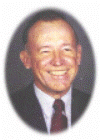

(Succeeded in raising a two-million dollar endowment fund)
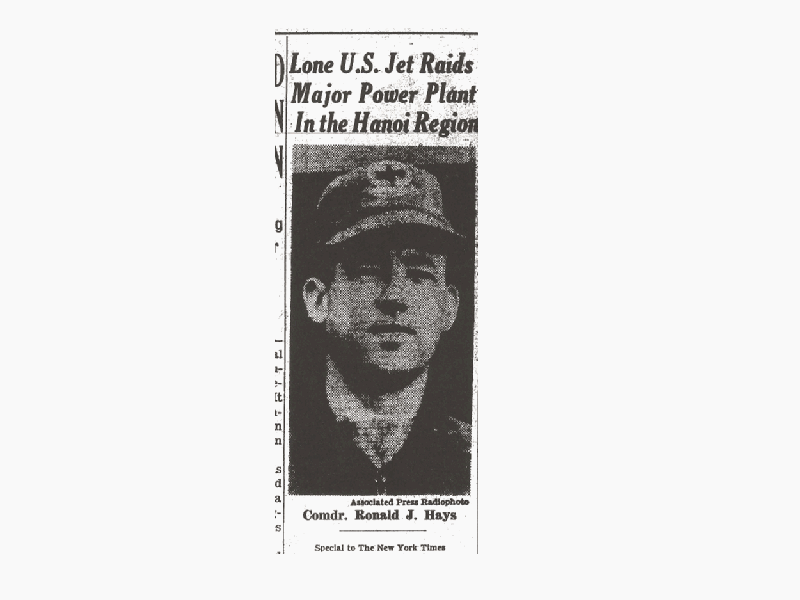
A single jet fighter bomber of the United States Navy sliced through the soupy skies and violent anti-aircraft fire last night in a daring raid on one of North Vietnam’s most important power plants. The two seat A-6 Intruder (was) piloted by Comdr. Ronald J. Hays, 39 years old, of Olla La…
The Baegiang power plant is reported to be the newest in North Vietnam. It generated 9 per cent of the nation’s power. American bombers have attacked the plant several times, but the attack yesterday was the first believed to have been carried out by one plane.
Commander Hays said that antiaircraft shells had exploded around him as he dived on the power plant and that he had to twist away from four surface-to-air missiles as the bombs fell.
One of the exploding bombs jolted the skittering plane. Back at the carrier Kitty Hawk, Commander Hays said: `I’ve had enough excitement for a lifetime. `

Awarded two patents by the U.S. Patent Office for engineered devices providing pre-heating of automobile catalytic converters thereby eliminating most cold start-up non-combustion pollution associated with ignition, 1992.
-The Man Who Wore the Star—Real Time Perspectives on a Business Leader’s Changing World
, published by The Business Council of New York State, Inc., 2001 with forward by Henry Rosovsky, Dean, College of Arts and Sciences, Harvard University.N.B.:
The book is an encapsulation of Kinnear’s lifelong study of leadership and ethics and his belief that they can be taught. He draws on his Naval and Business experience to make a case that is particularly relevant today.-8 September 2002, Corporate Governance, Article: Directorship re: Stock Option Expensing.
-Oral Histories, The University of Texas Archives, Tapes 107 & 109: Oral History of the Texas Oil Industry.
"I went down to the Academy and met with some of the professors and the midshipmen who were studying under them, and I saw all the good that the Fellows Program was doing. It had a snowball effect on me; I wanted to give even more."
"The Naval Academy is the greatest teacher of leadership in the world. It teaches you to go find solutions for yourself. You learn leadership, public speaking and crisis management skills, all of which have great value in the world."
solid management team at all levels…and remember this: …Texaco’s greatest successes lie in the future. Whatever we have achieved in the past is only important in that it allows us to be here today and to do great things in the future.
No road is straight. And you can be sure that there is a lion or around each corner. But you have proven that you have the right stuff to deal with those…that I know lie out ahead.
I thank you for your hard work, for your success, and most of all for your friendship. And if you remember me at all…I hope that it will be as a happy warrior who left the place at least somewhat better than he found it.
September 9, 2003
MEMORANDUM FOR CLASS AND CHAPTER PRESIDENTS
From: President and CEO, U.S. Naval Academy Alumni Assoc.
Subject: Nominees for 2004 Distinguished Graduate Award
Encl: (1) Previous Distinguished Graduate Award recipients
(2) Distinguished Graduate Award Selection Criteria
- Distinguished Graduate Award Nomination Form
- Example nominations
The United States Naval Academy Alumni Association and the United States Naval Academy will present the 2003 Distinguished Graduate Award Medal to four of our graduates during the weekend of November 21-22, 2003 at prestigious and memorable ceremonies. The 2003 Distinguished Graduates are: AMB William H. G. FitzGerald, ’31; RADM Eugene B. Fluckey, USN (Ret.) ’35; RADM Robert W. McNitt, USN (Ret.) ’38; and VADM William D. Houser, USN (Ret.) ’42. All recipients of this award are listed in enclosure (1).
The purpose of the Distinguished Graduate Award is to identify to the public and the Brigade of Midshipmen the broad national significance of the Naval Academy as one of the nation’s premier academic and military institutions. The Distinguished Graduate Award program continues to grow in scope and impact. Midshipmen are now included as an integral part of the ceremonies; expanding their knowledge of these distinguished alumni who provide inspirational role models for them to emulate.
On behalf of the Naval Academy Alumni Association and Admiral Kinnaird R. McKee,’51 the Chairman of the Distinguished Graduate Award Committee, I offer you the opportunity to provide nominations for the 2004 Distinguished Graduate Award. As alumni leaders, you know of fellow graduates who are leaders that embody the spirit of this award and its nominating criteria; and who should be included as candidates.
We ask that each Chapter and Class President publicize this award to your yeargroup and chapter with a call for appropriate nominations. Nominating criteria and format will be displayed on the Alumni Association website,
www.usna.com. Nominating packages of candidate(s) for the 2004 Distinguished Graduate Award should arrive at the Naval Academy Alumni Association no later than December 19, 2003. Nomination documents should be in the format provided in enclosure (3). We require that strong, written justification be provided for each category in the nominating criteria. Enclosure (4) provides examples of successful nomination packages. Although it is preferred that nominations come through Class and Chapter Presidents, any alumnus can submit an appropriately documented nomination package. Nominees need not necessarily be a member of the Chapter or Class forwarding the nomination.If you have provided a nominee before who was not selected, consider the date of your first submission. Nominees not selected in the year nominated will remain on the list for consideration for a period of 2 years. The initial nominators of each candidate will be contacted separately to confirm if they desire to update, renew or enhance previous nominations.
After the submission deadline of December 19, 2003; candidate(s) packages will be compiled and submitted to the 2004 Distinguished Graduate Award Selection Committee. The Selection Committee will convene in January 2004. The Selection Committee will provide the same amount of care and consideration for each package as that placed into its preparation.
Individuals requiring additional assistance or information should contact Andrea Campbell at (410) 263-4448, ext 214 / [email protected].
Please take advantage of this opportunity to highlight graduates who have provided a lifetime of service, made significant and distinguished contributions to the nation; and demonstrated a strong interest in supporting the Navy and the United States Naval Academy. By doing so, you will assist us in promoting the Naval Academy as an institution which produces leaders of great character for the nation.
With Very Best Regards,
George P. Watt, Jr.
GPWjr:ac
Enclosures
